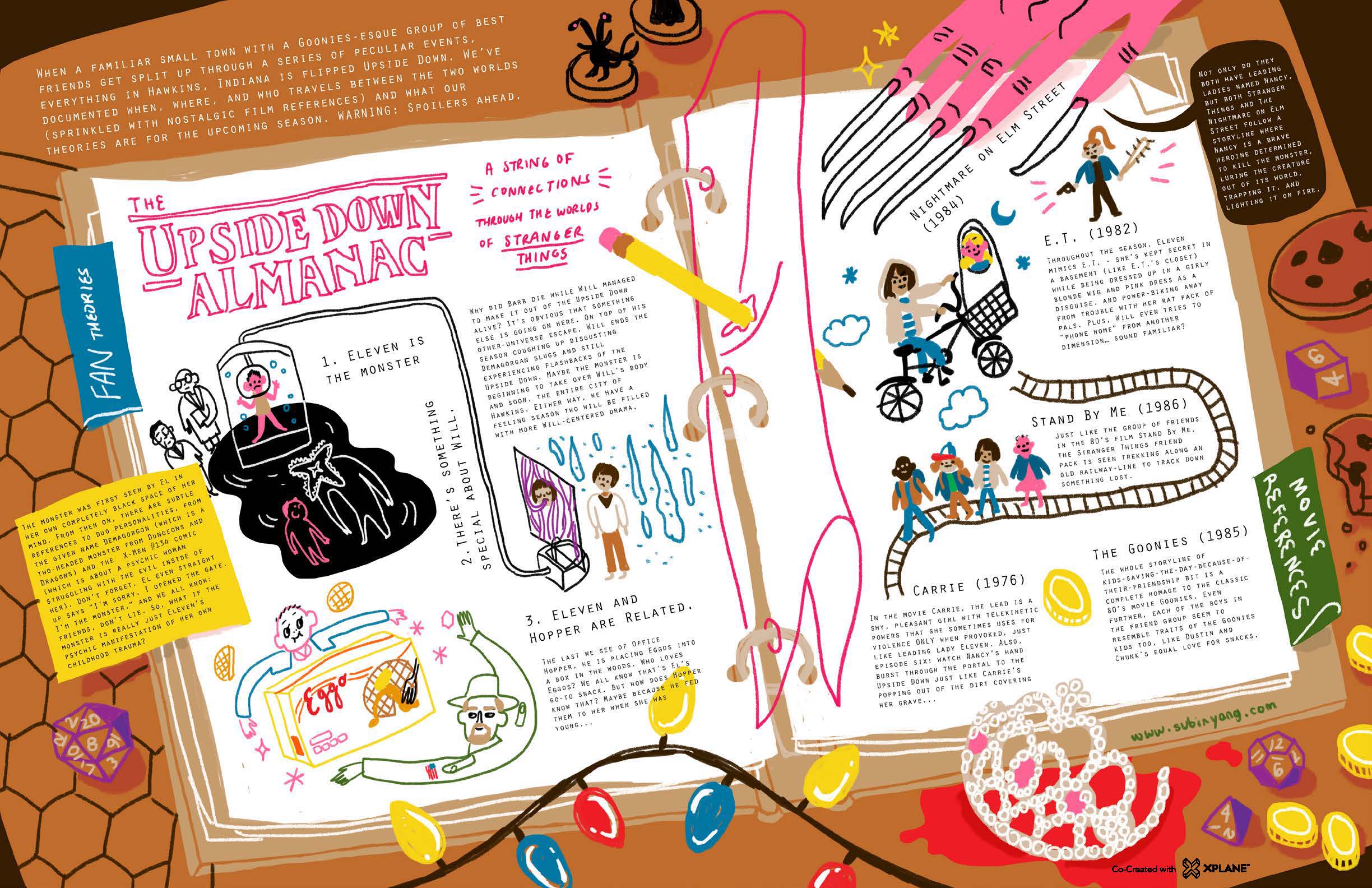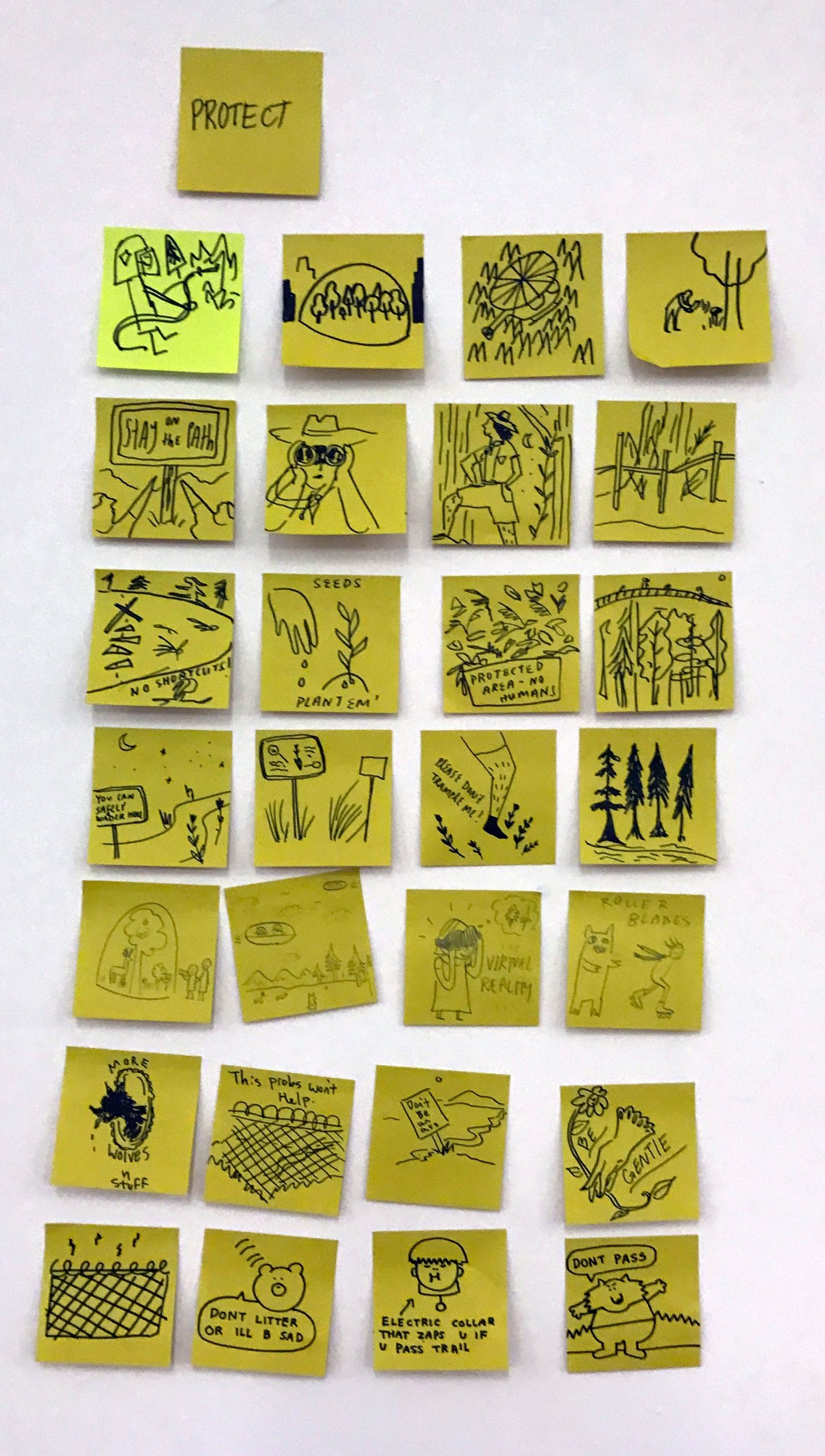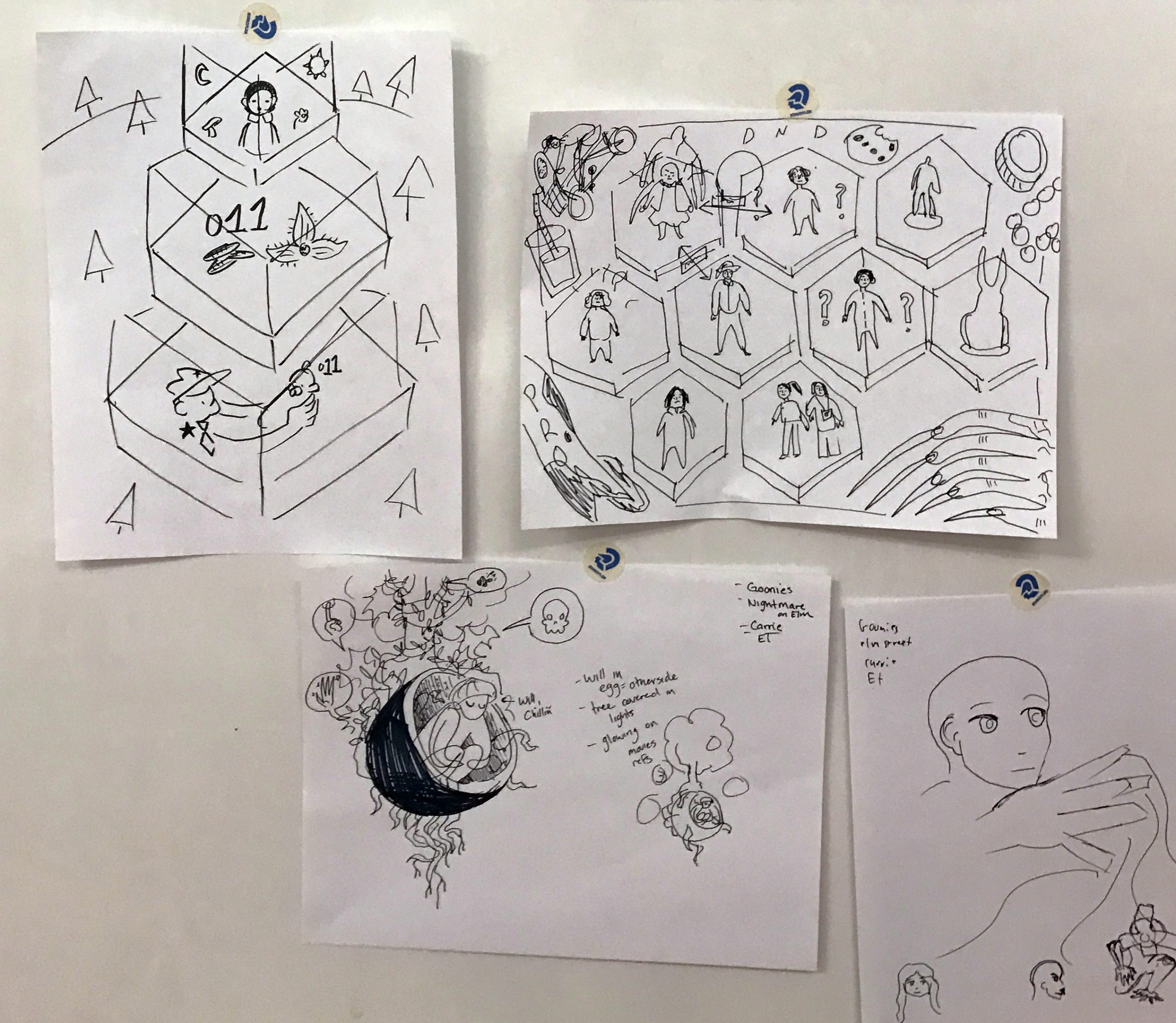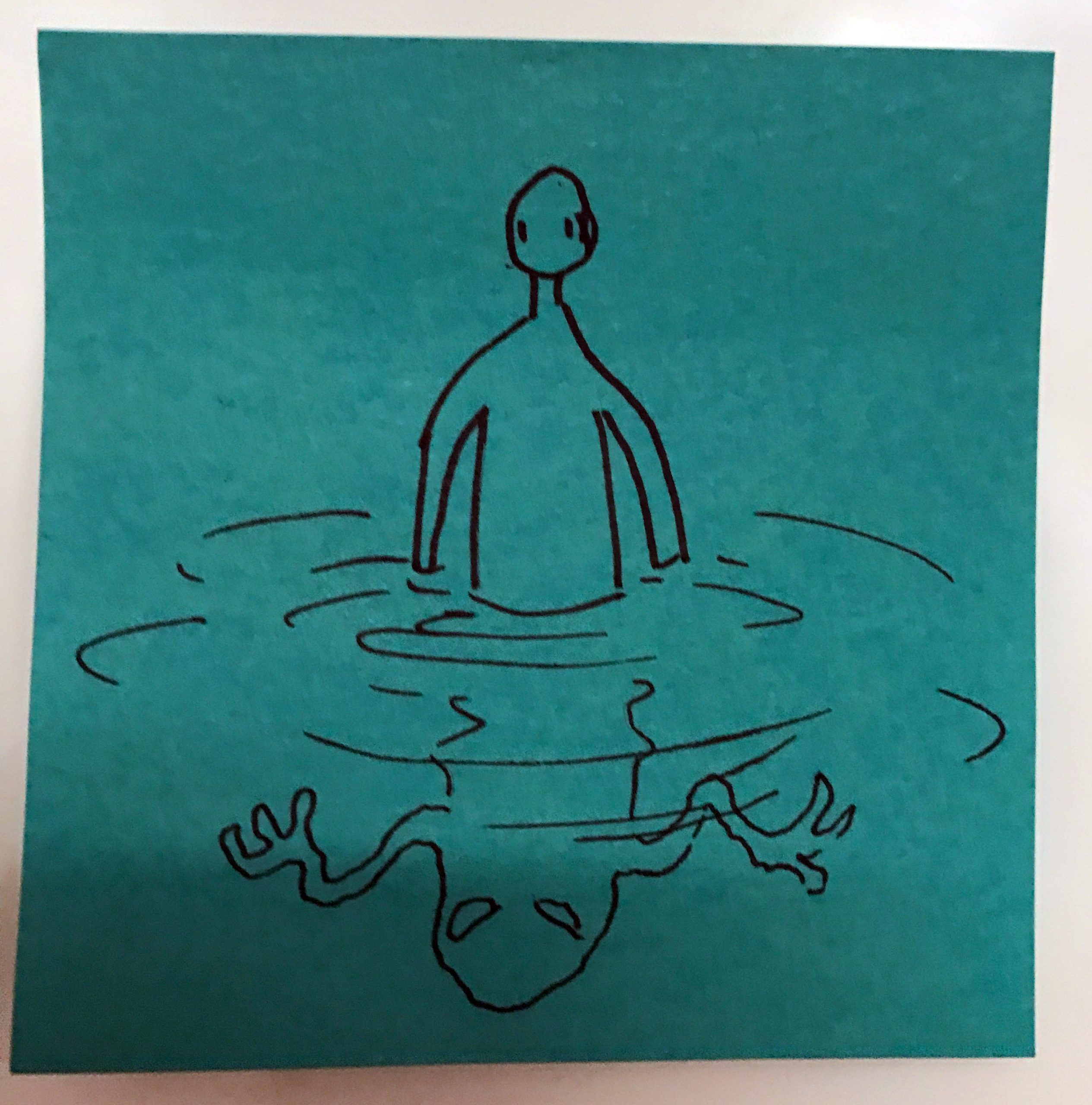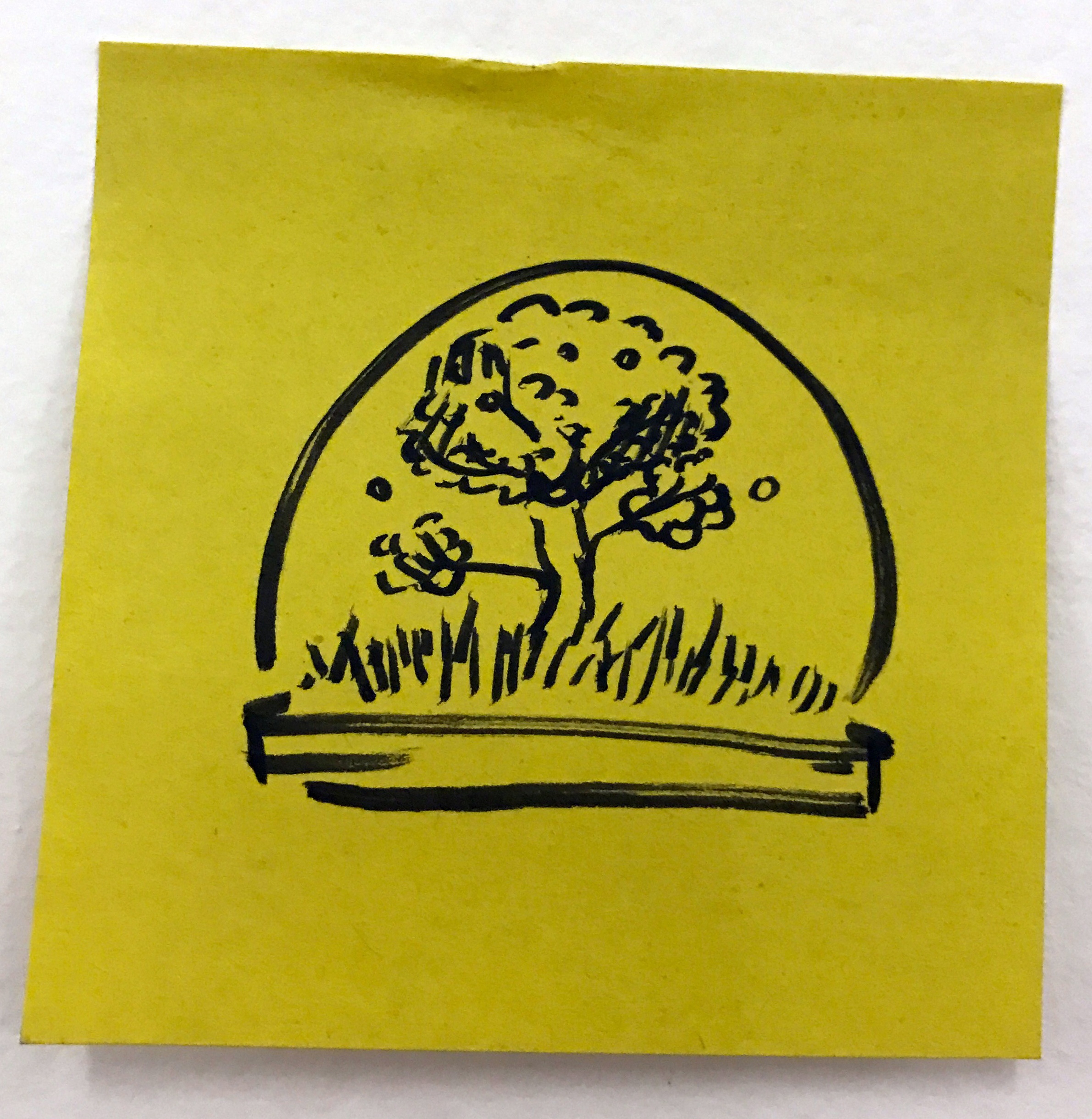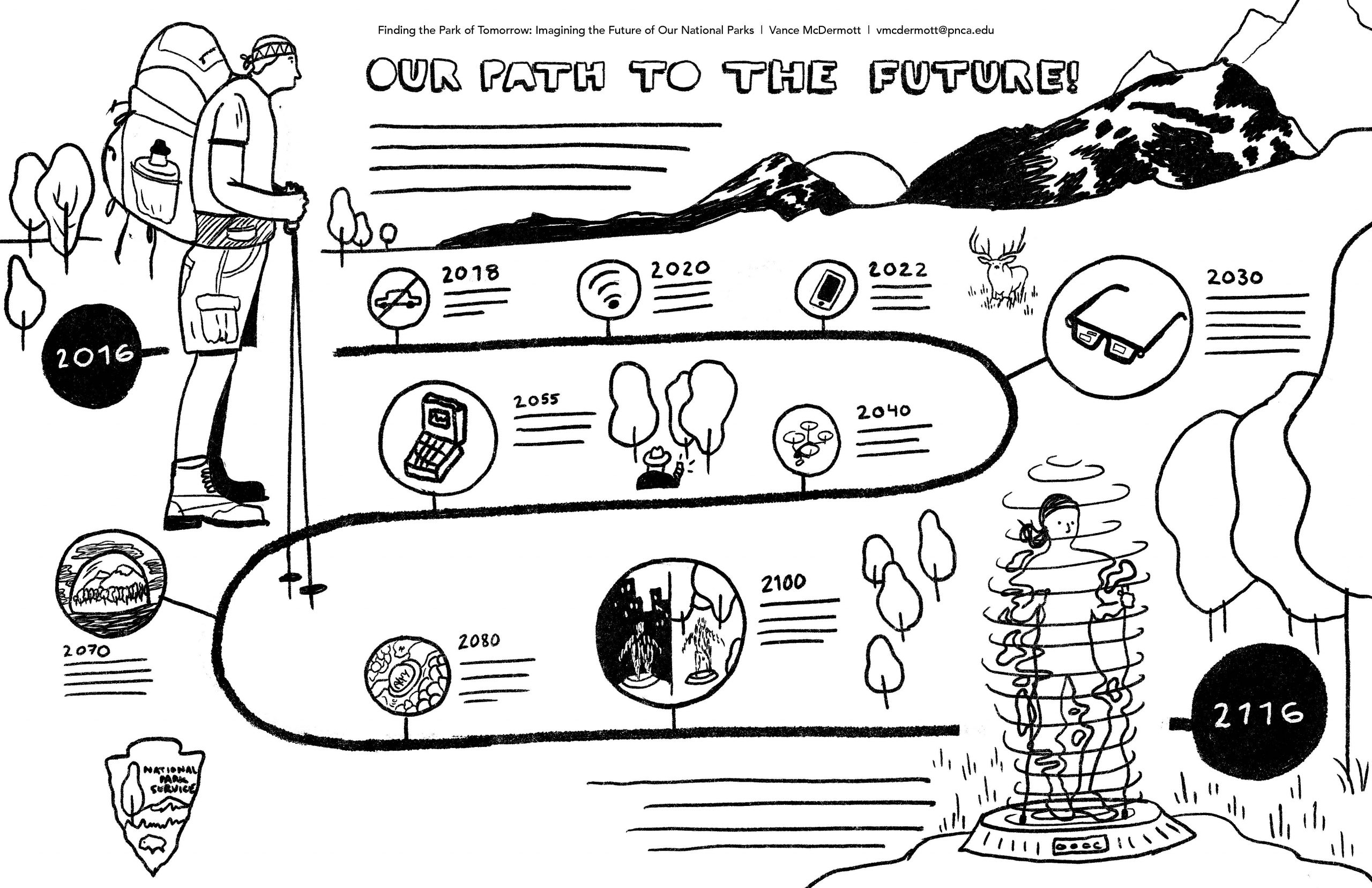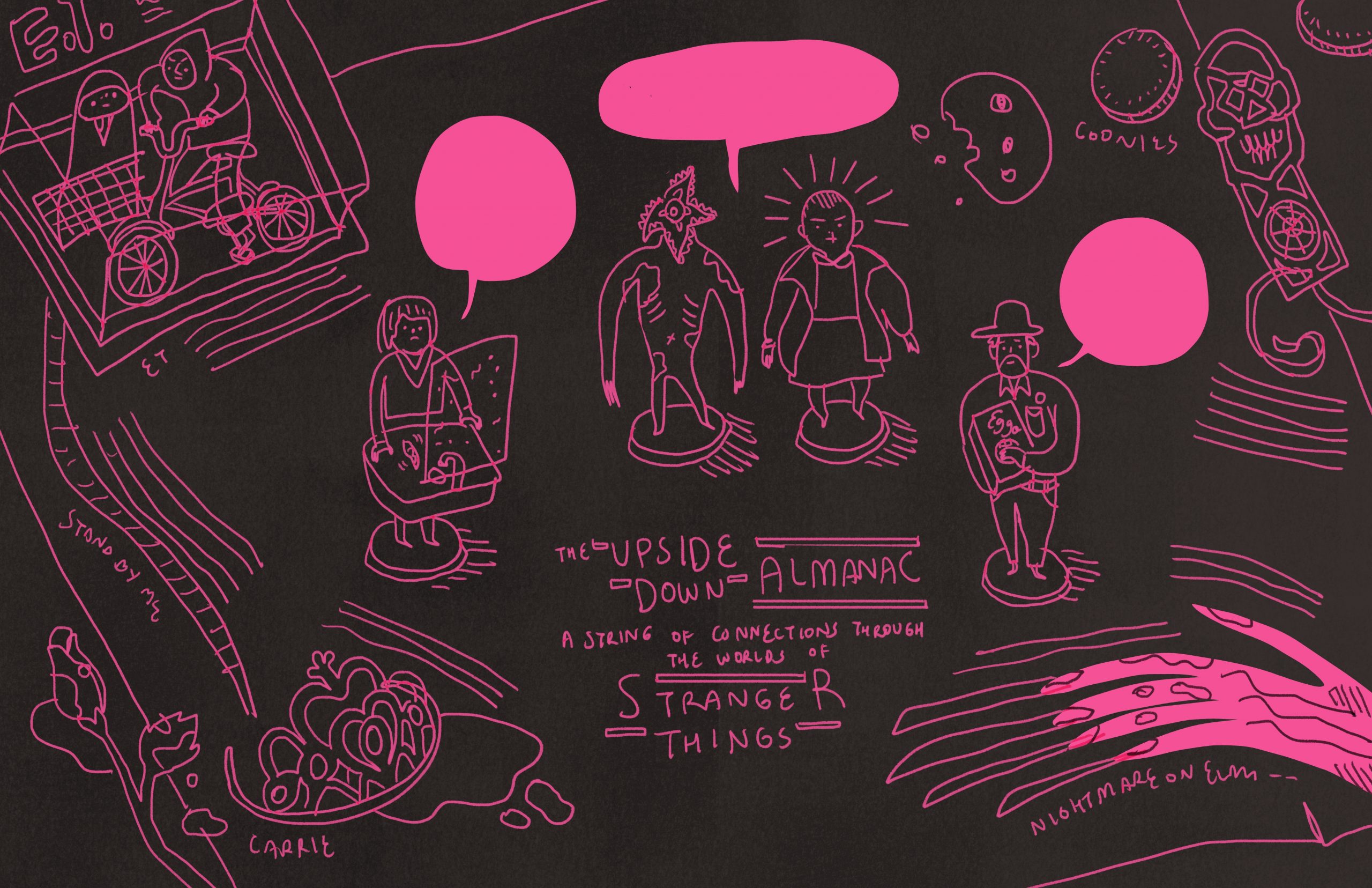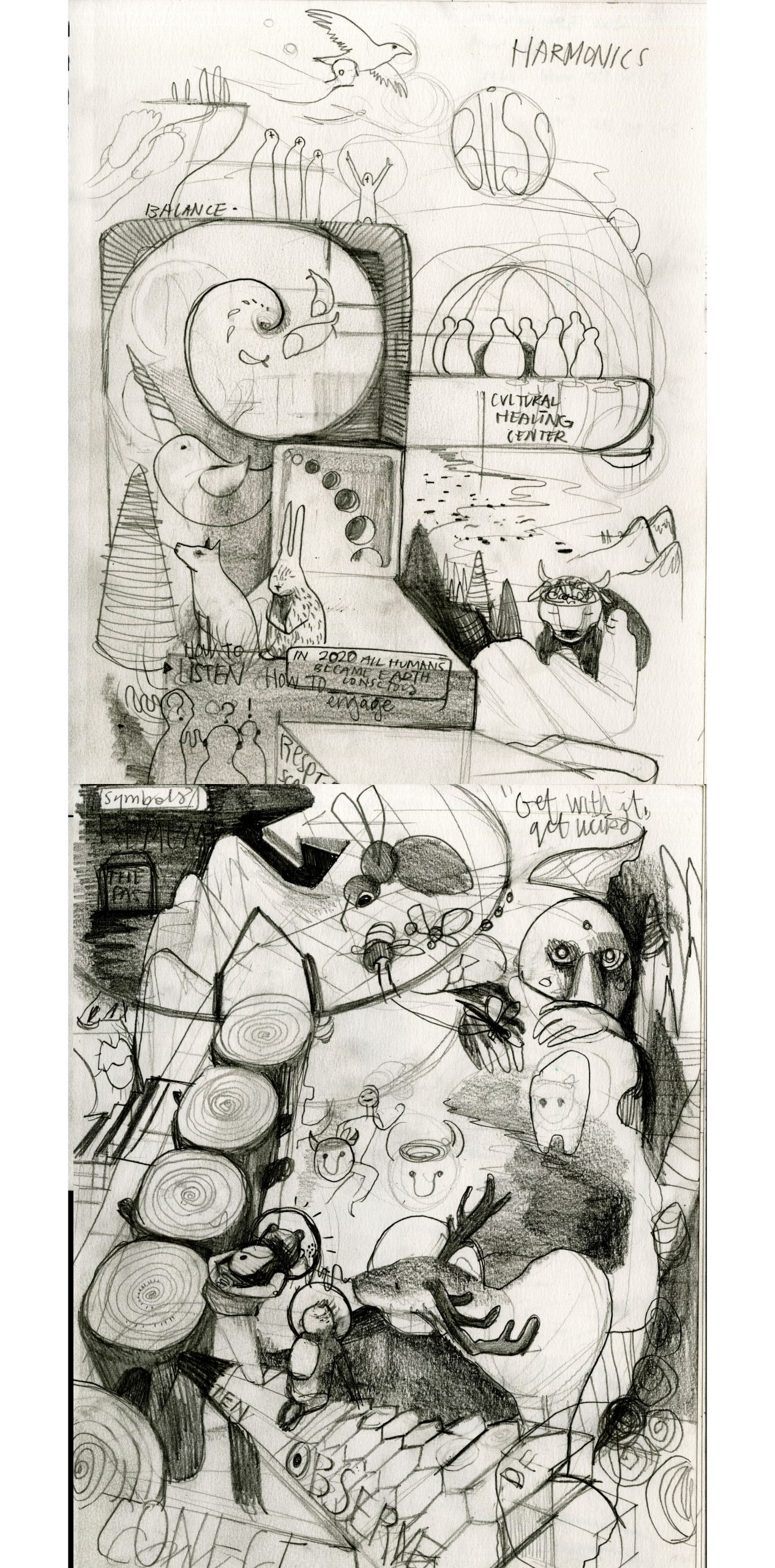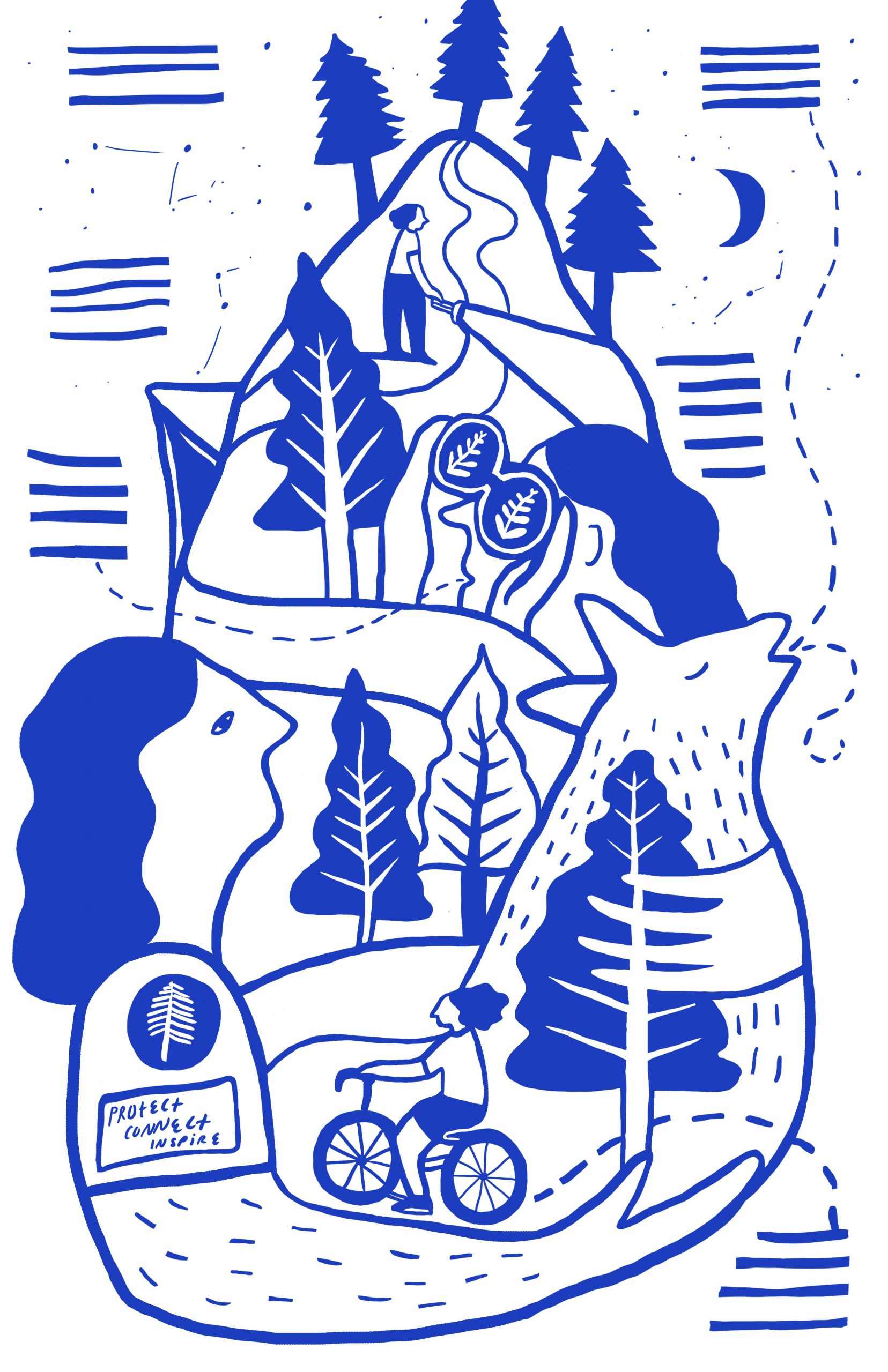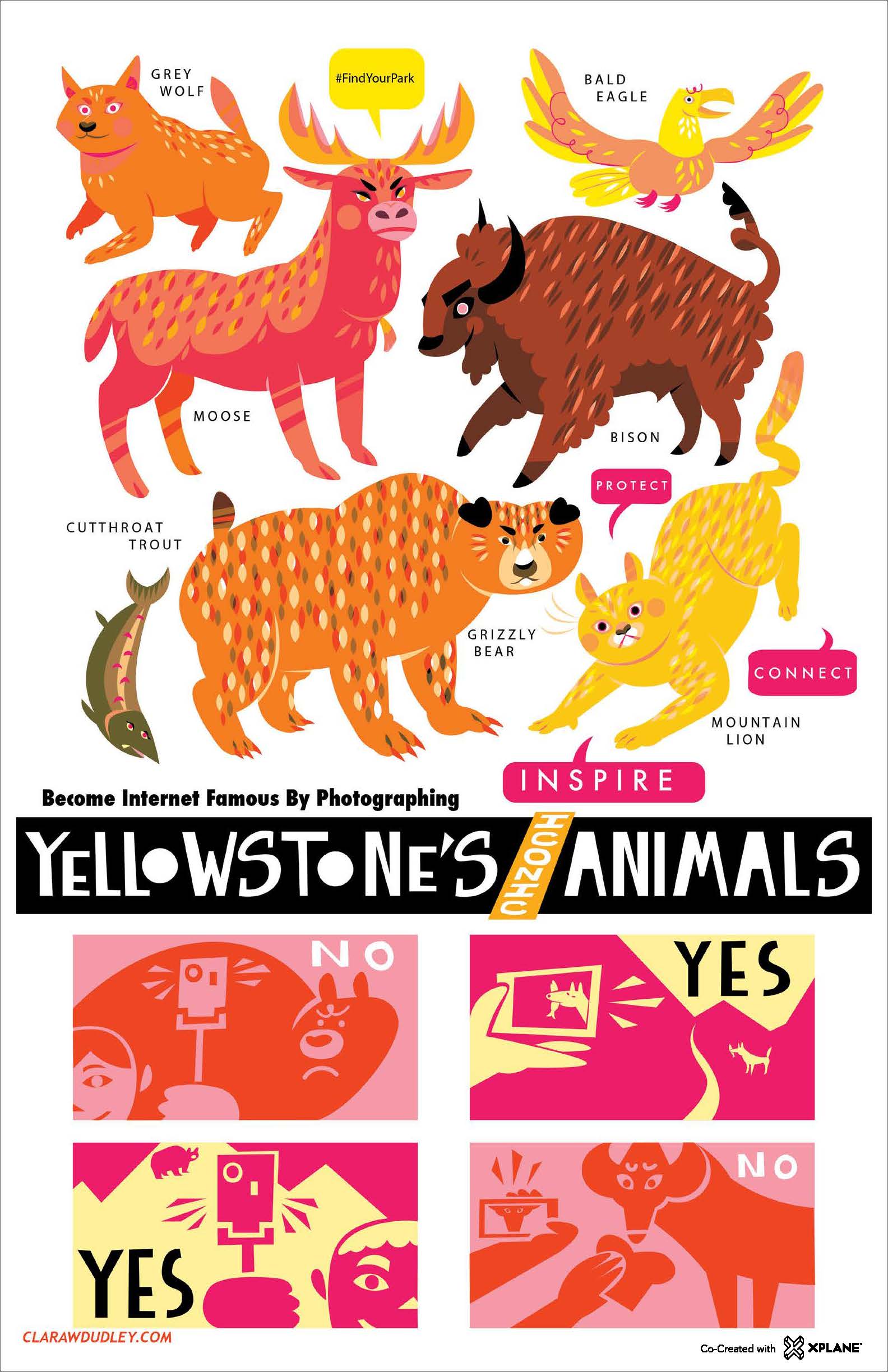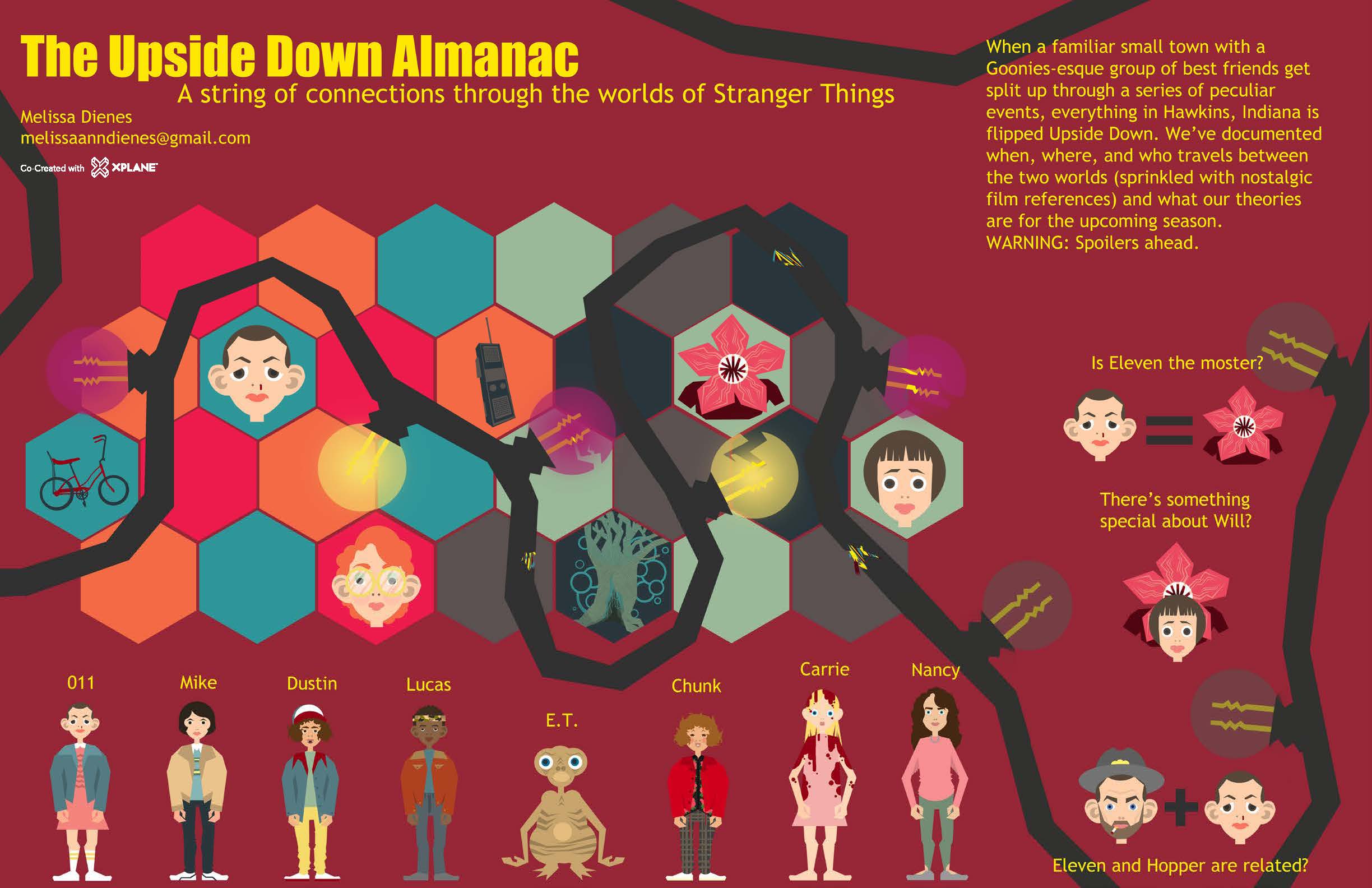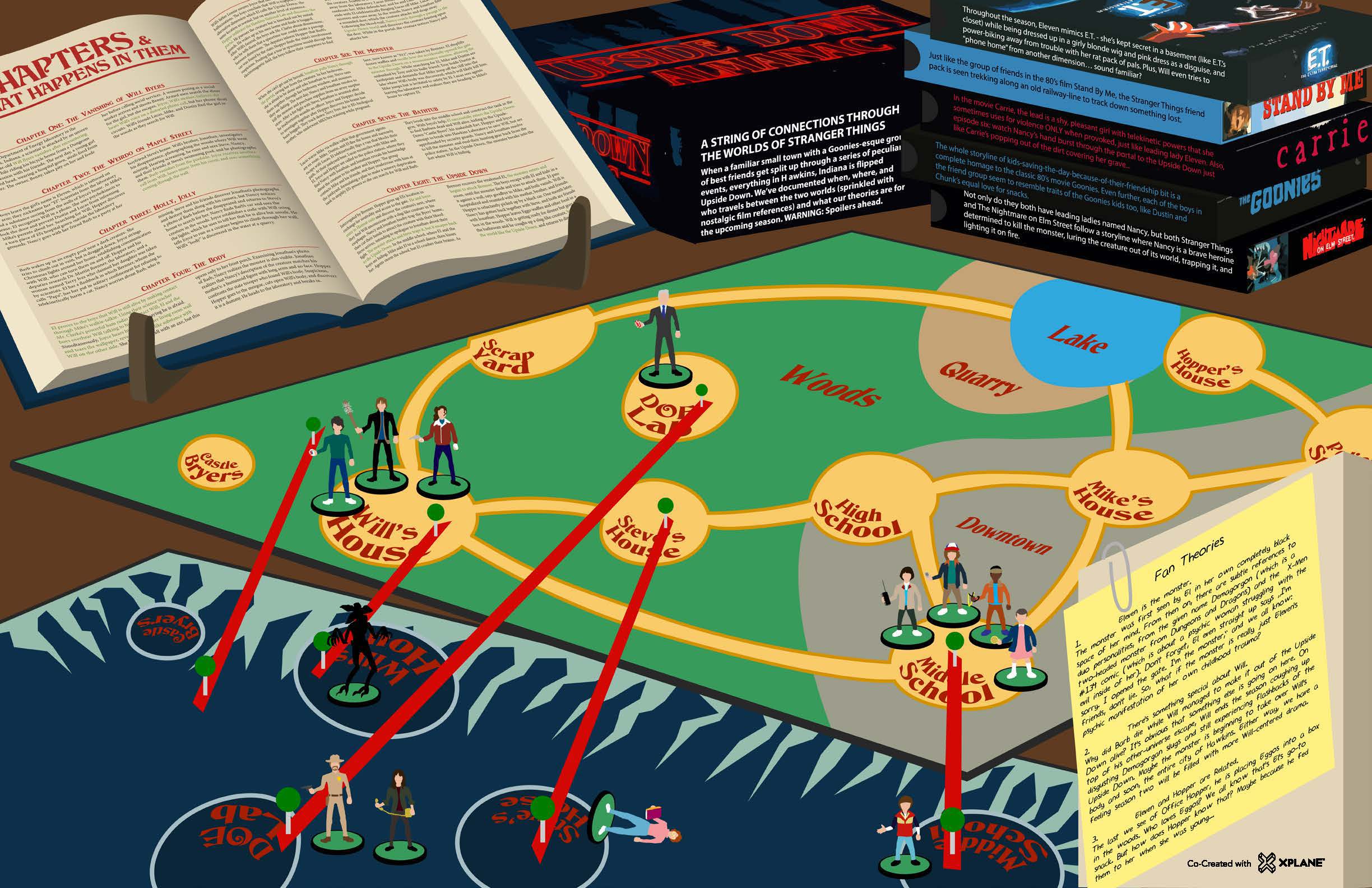As XPLANE designers, we spend our days using visuals to bring clarity to the complexities of processes and strategies inside of organizations. But, since most of the work is internal, a lot of our proudest projects are confidential and can’t be shared with the public. This fall, we saw the opportunity to share our work with a greater audience while exploring topics we’re passionate about—all while flexing our visual thinking and facilitation skills.
In November, our design team partnered with illustration students at Pacific Northwest College of Art (PNCA) to bring their talents to two topics we were excited about: the pop culture phenomenon Stranger Things and the National Parks Centennial celebration. Our challenge to the students was to work like an XPLANEr, using our frameworks to illustrate one of these topics in an 11×17” map. Not only was this a great opportunity to collaborate with up-and-coming talent, but also was a chance for our team to share real-life work experiences with a group of eager students and co-create pieces of timely design work.
Before we met with the students we laid some groundwork in developing the specific stories we wanted to tell and offering sketches of how they could be told.
Mapping out Stranger Things
After Netflix’s hit season of Stranger Things ended, we were clamoring to explore and visualize the intricacies of the storyline behind the show. Our goal was to map out the relationships and crossovers into the show’s Upside Down world, while incorporating pieces of well-known 80s references and imagining the fan theories for the next season.
We sketched out a few ways one could visualize the information to inspire the PNCA illustrators on their design journey through the Upside Down:
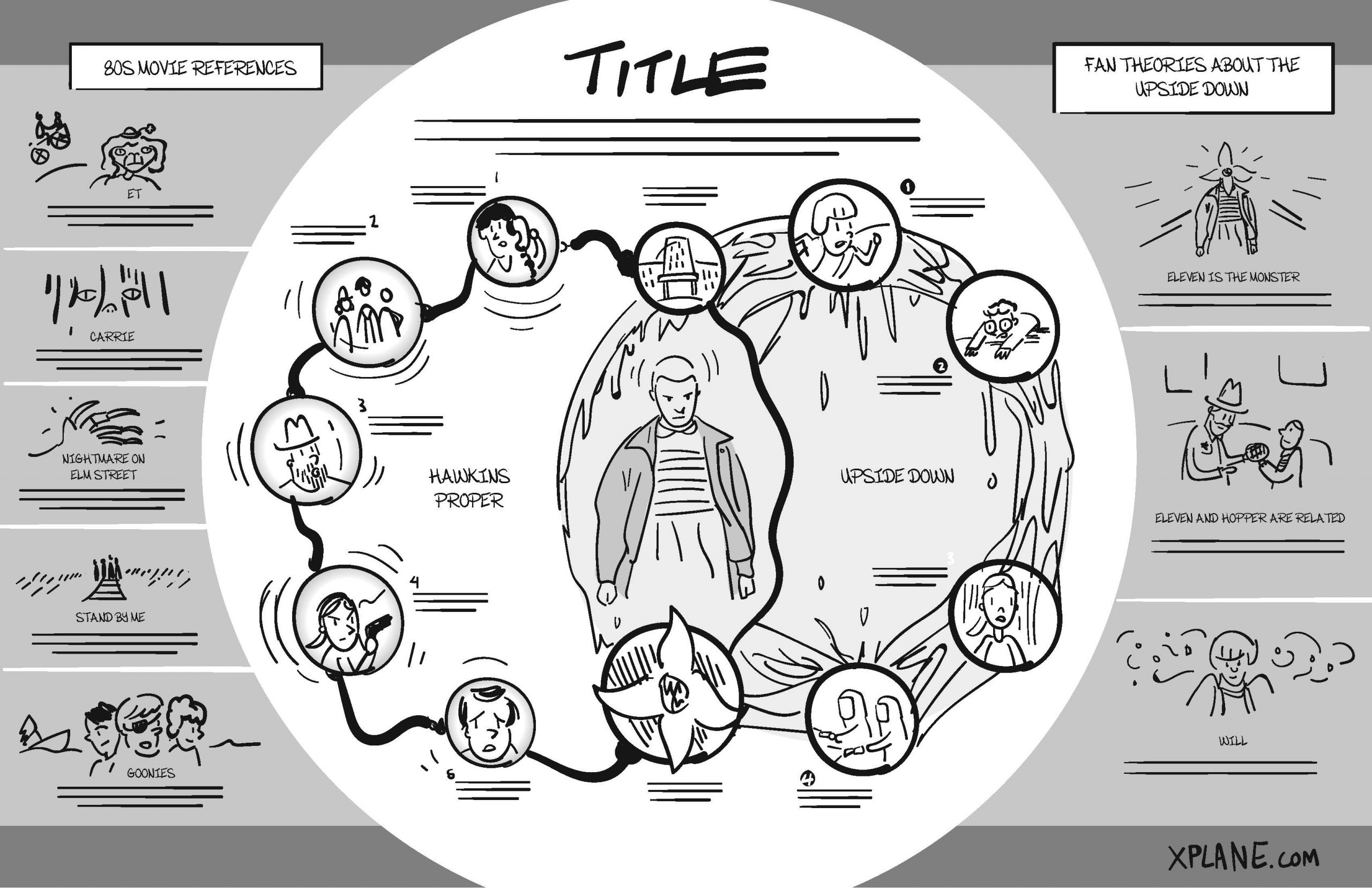
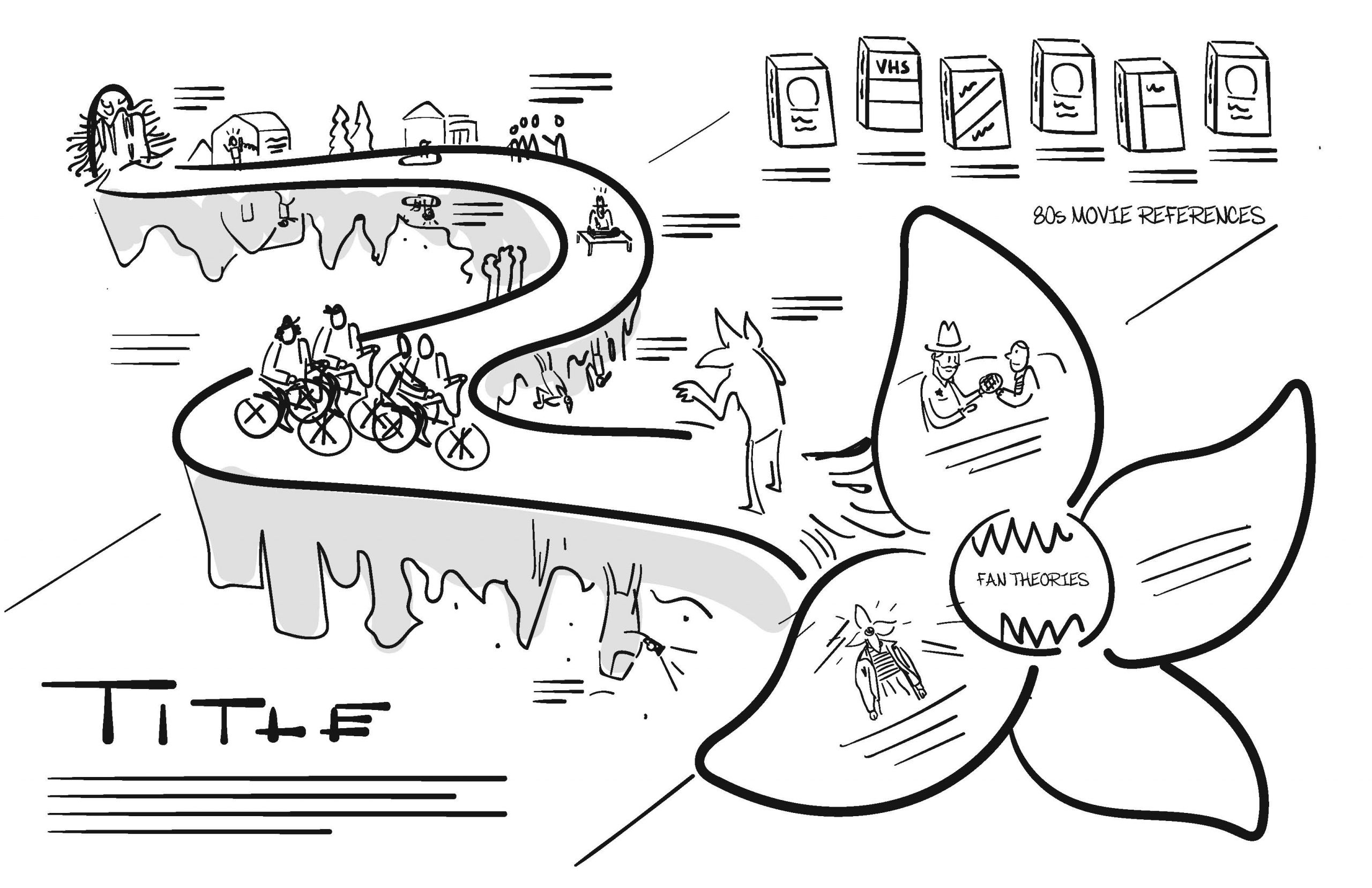
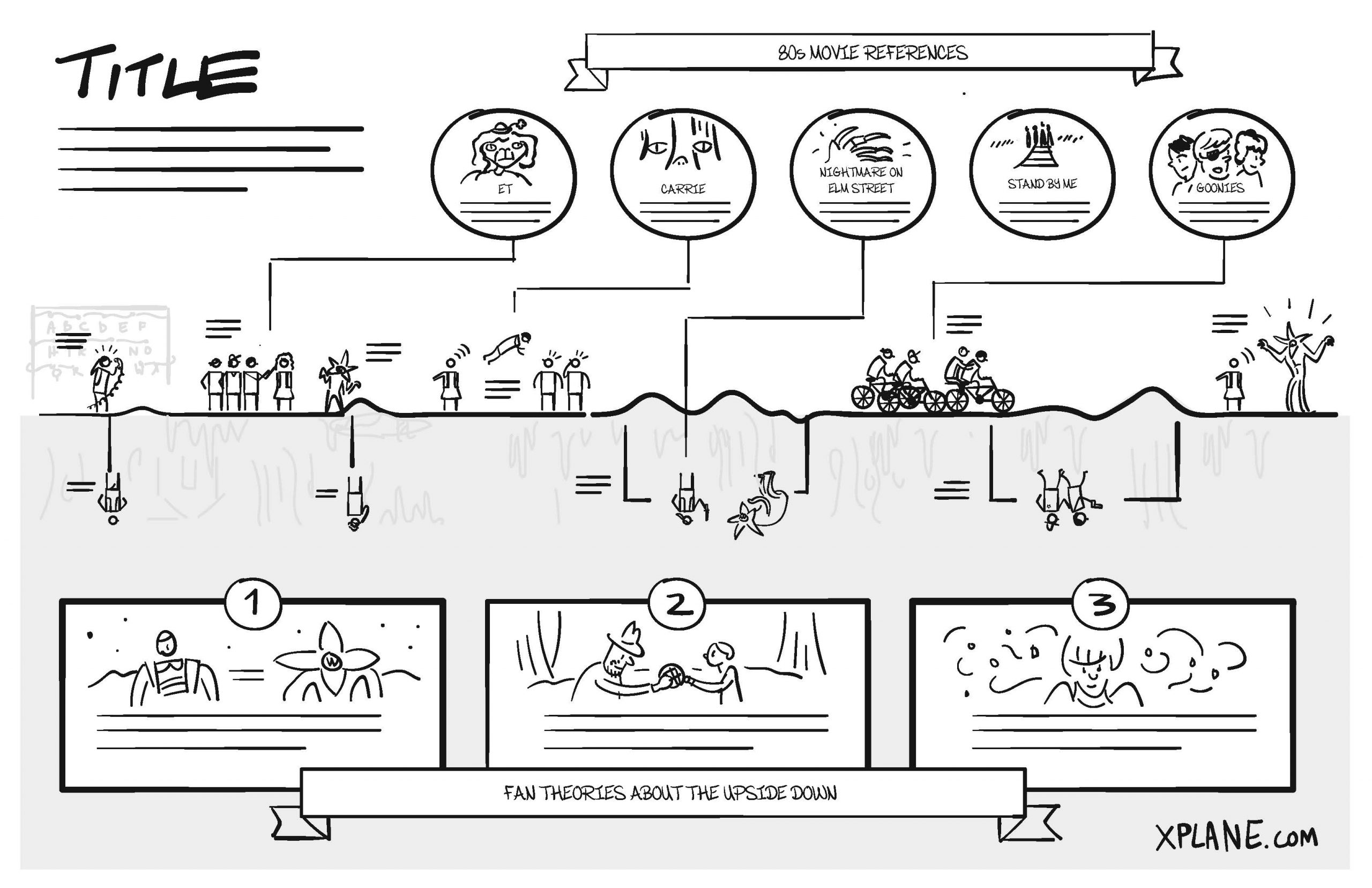
Mapping out the future of the National Parks
We had been reading a lot about the future of our National Parks, including the need for more diversity of visitors in both age and race as well as the stress by visitor overcrowding and lack of funding. Using the “#FindYourPark” campaign promoted by Michelle Obama and Laura Bush as a lens, we wanted to explore what Yellowstone Park—the most visited of all National Parks—could look like 100 years from now. Our goals were to excite younger, digital-savvy visitors about the park and to inspire ideas about creating a sustainable environment for generations to come.
We sketched out concepts of how the students might show technology overlaying the park or what a process might look like to get from 2016 to a future state of 2116:
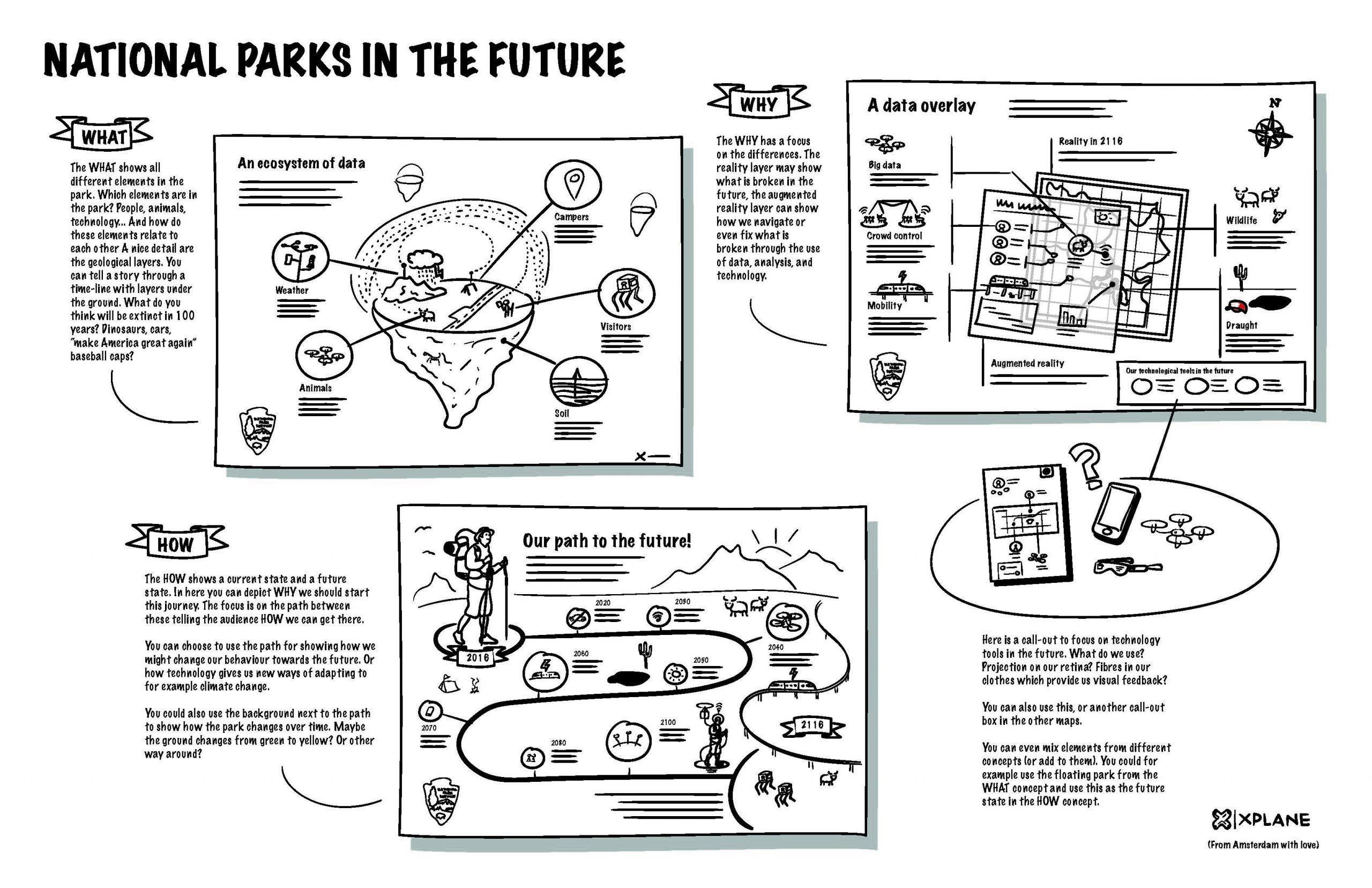
Workshop
Once we had completed enough groundwork to give students a base with which to work, we met with PNCA’s Kristin Rogers Brown and her two, senior-level illustration classes to take the concept ideas to the next level. We split up classes to focus on the two topics in a Visual Thinking School-inspired session. Half the class used frameworks to come up with ways to visualize the Stranger Things world, and the other half visualized all the ways our National Parks might look 100 years from now.
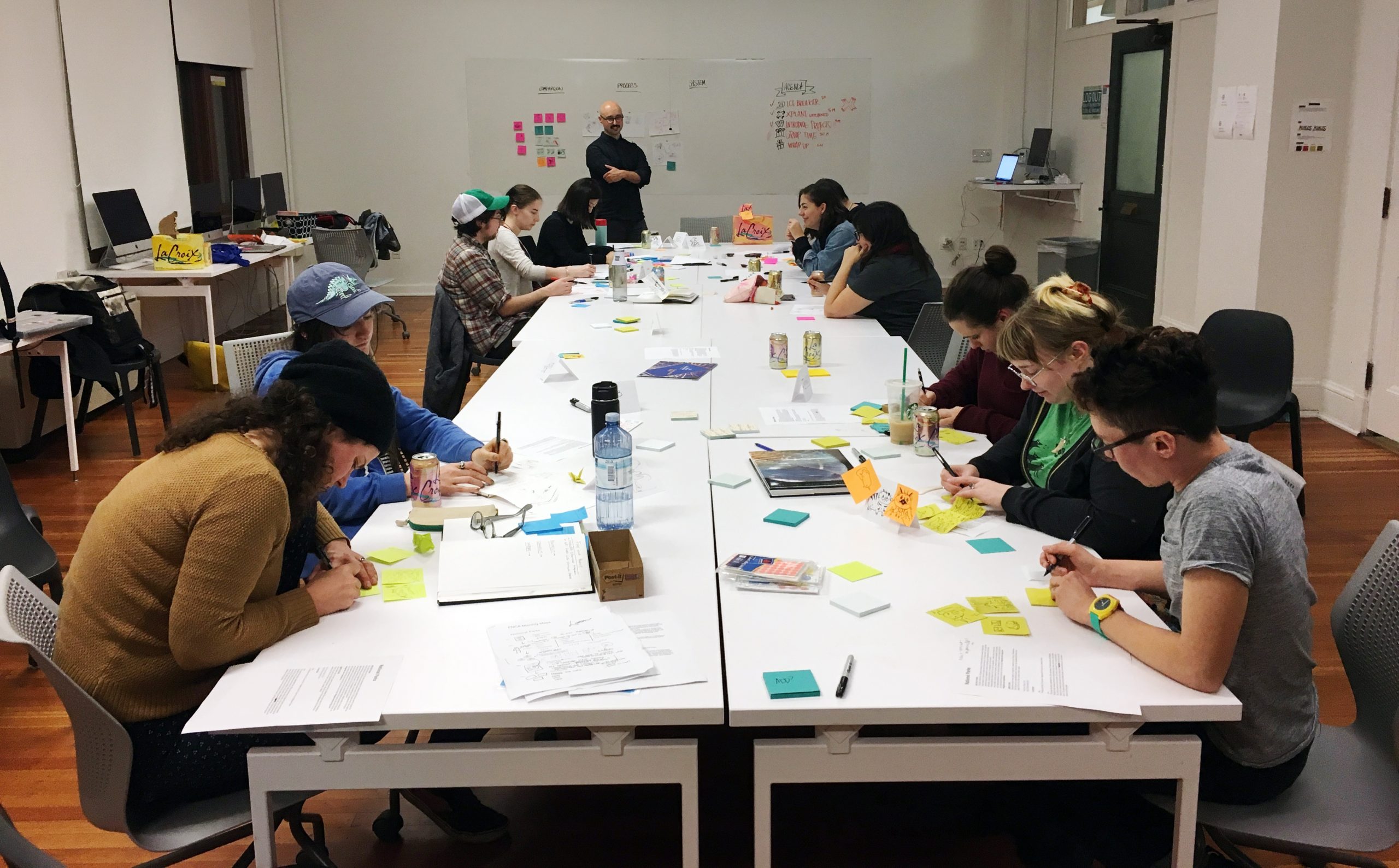
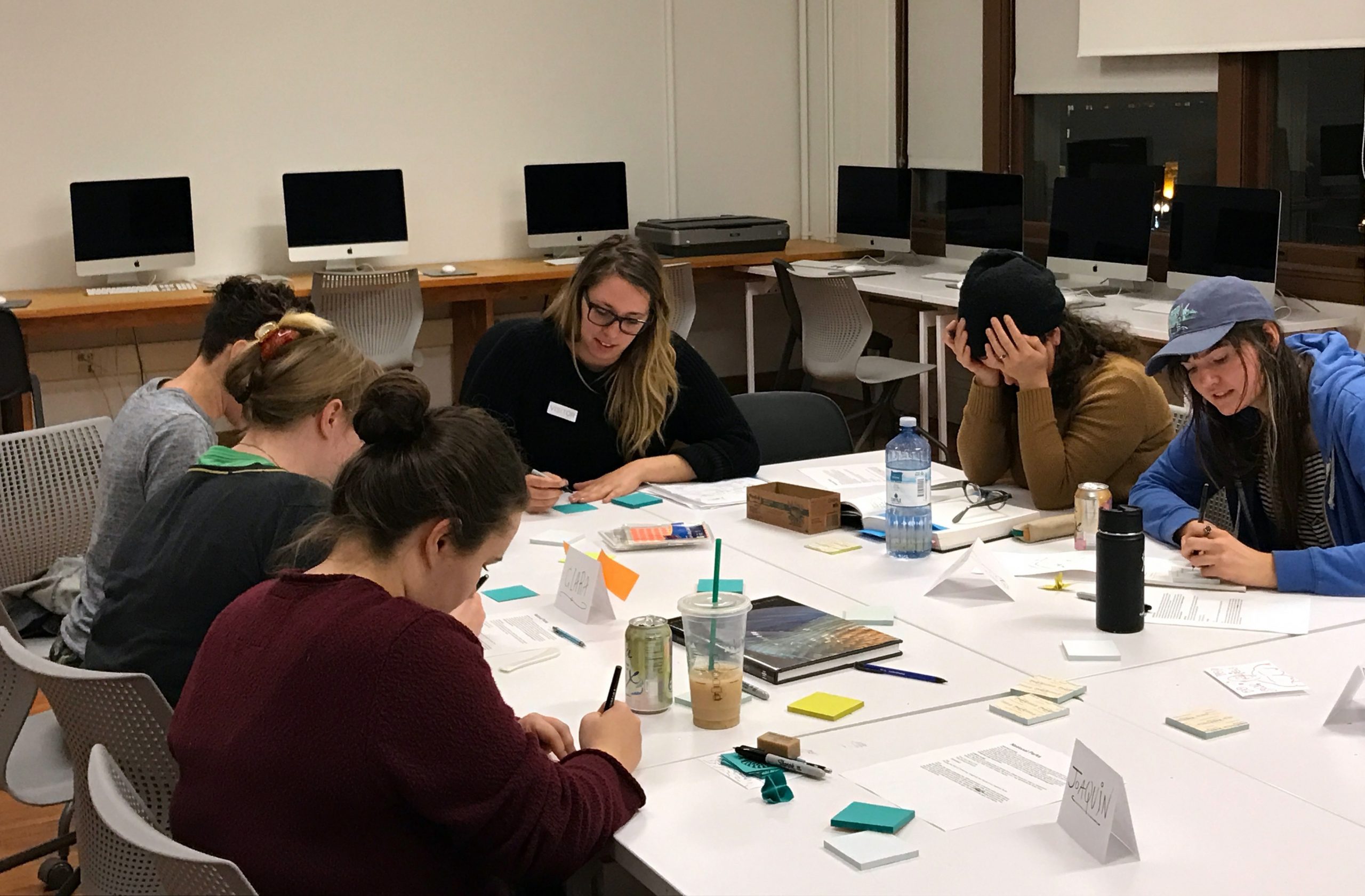
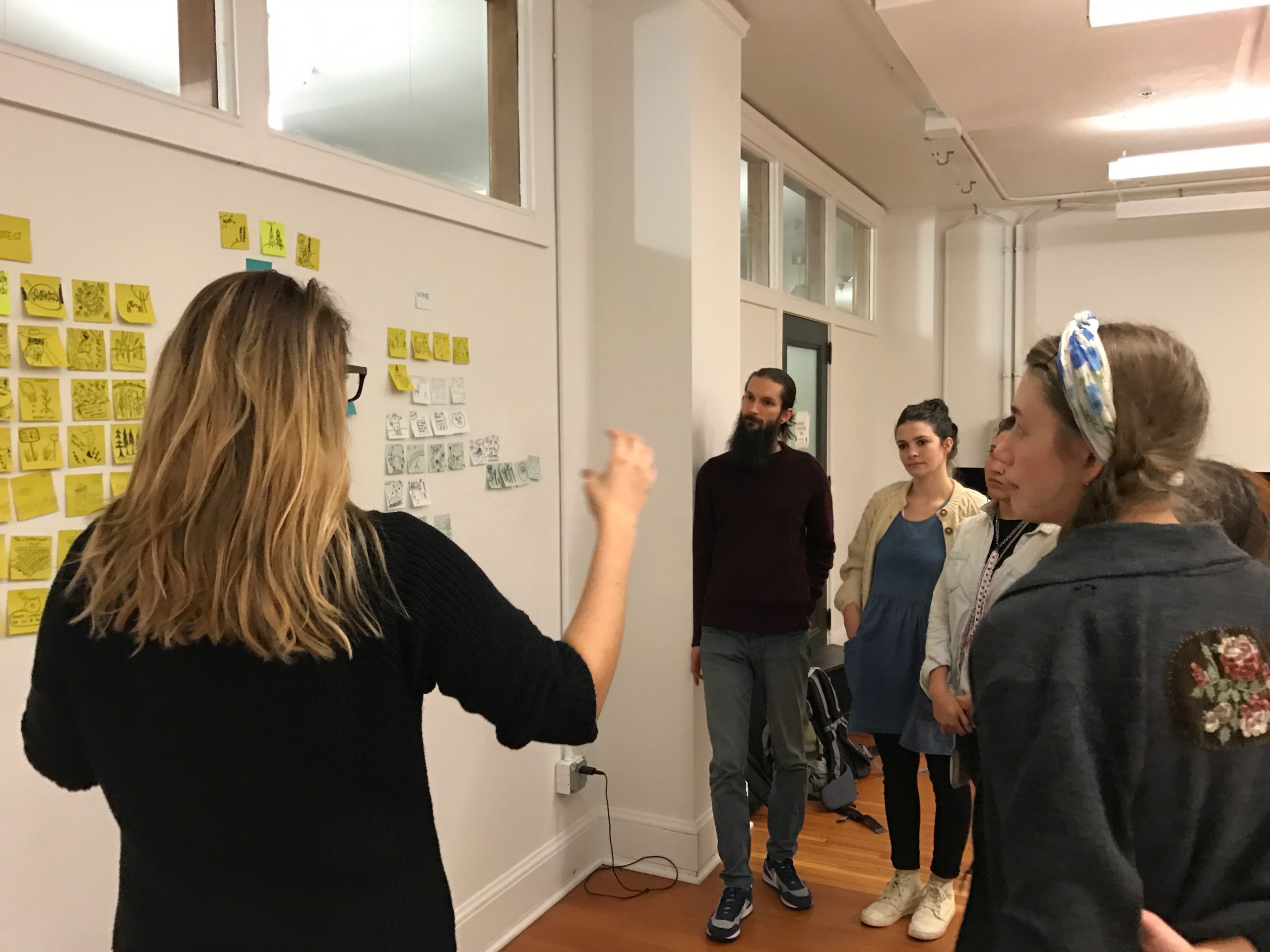
Student Sketches
After the workshop we asked the students to take their sketches and ideas and refine them further. To give the students a taste of what it would be like to work with an XPLANE designer on a client project, we provided feedback and direction after they sent us their refined concepts. We were excited to see the variety and depth of explorations.
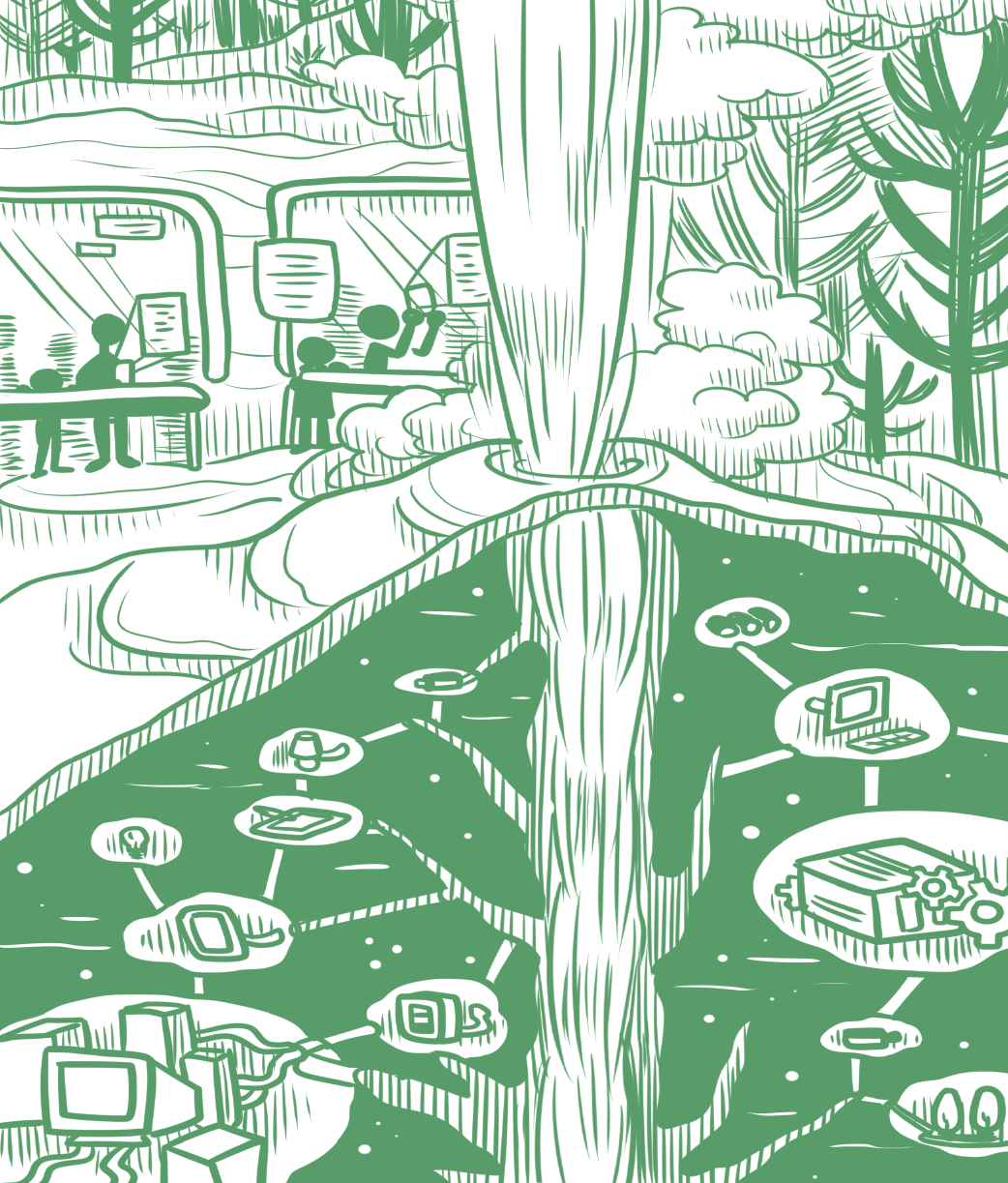
Final Maps
National Parks of the Future
We were really impressed that the students thought deeply about why the parks resonate with them and envisioned such new, personal, and elegant visual stories.
|
Illustration by Clara W. Dudley |
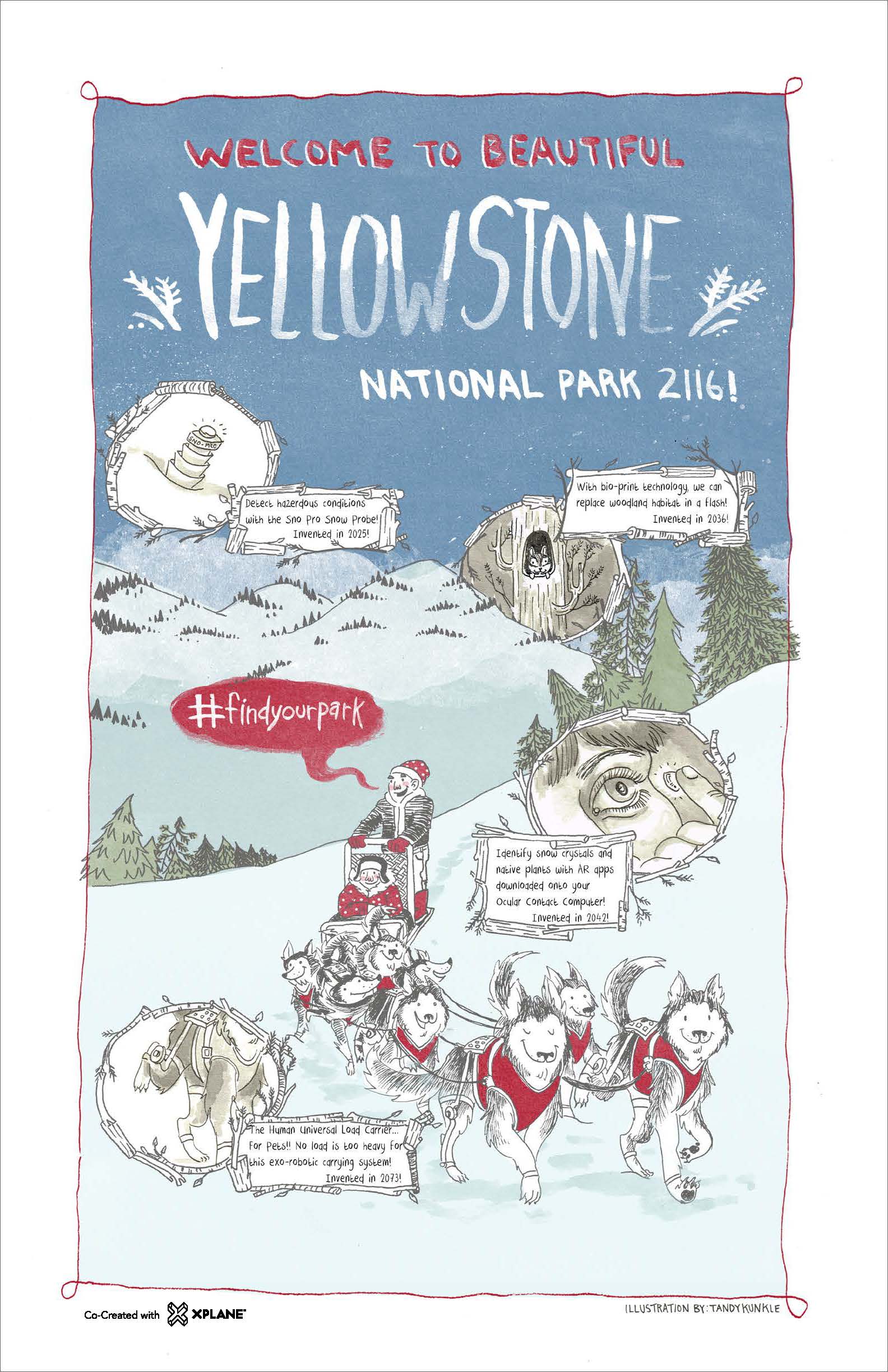 Illustration by Tandy Kunkle View Larger | View Portfolio |
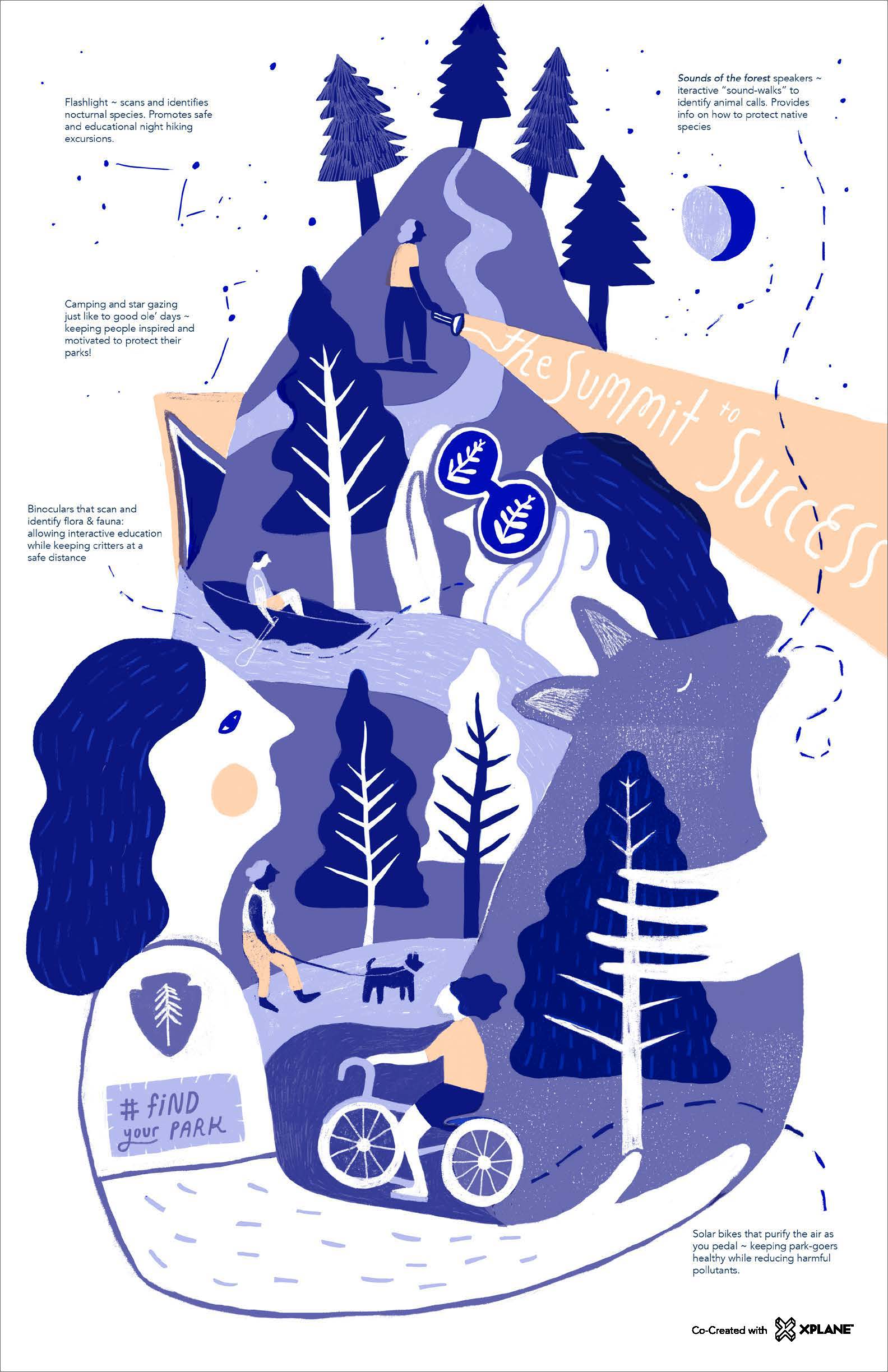
Illustration by Tess Rubinstein — View Larger | View Portfolio
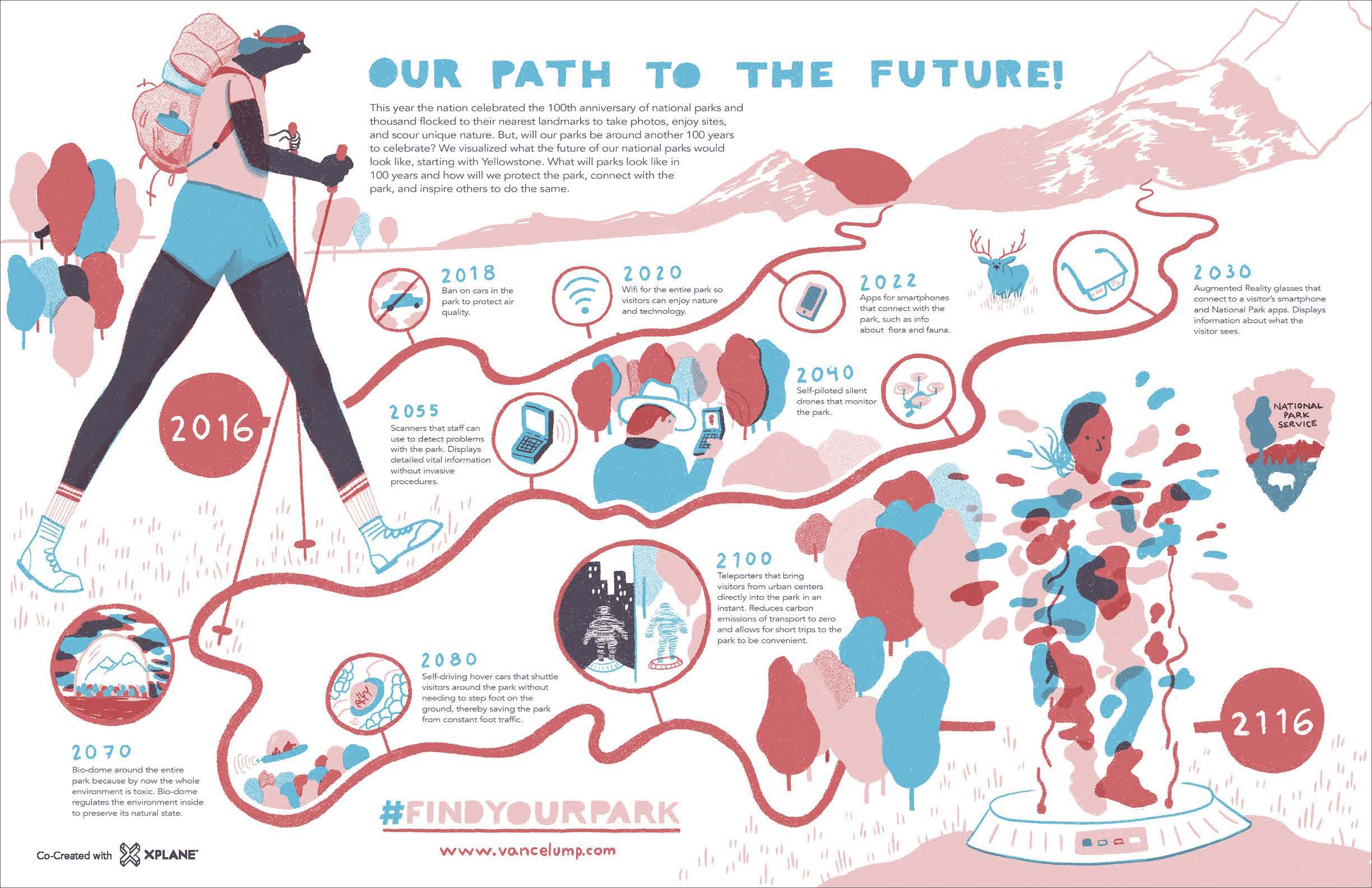
Illustration by Vance Lump — View Larger | View Portfolio
Stranger Things
The illustrators really stepped up to the challenge, incorporating large pieces of written content and text layout into their illustration work. We were delighted by how many of the pieces took all the abstract, heady ideas and spun them into physical and tangible things: The books, games, and landscapes they used as visual devices stem directly from the show’s universe.
Illustration by Subin Yang — View Larger | View Portfolio
Illustration by Melissa Dienes — View Larger | View Portfolio
Illustration by Colin Luton — View Larger | View Portfolio
Illustration by Grace Murphy — View Larger | View Portfolio
We would like to give a special thanks to PNCA, Kristin Rogers Brown, and all of the amazing illustrators that brought our stories to life. We had a blast working with and learning from all of you. We hope to see more of your work in the future!
PARTICIPATING ILLUSTRATORS:
Shannon Brokaw
Hope Darby
Melissa Dienes
Clara W. Dudley
Wade Gould
Clive Hawken
Tandy Kunkle
Seaerra Miller
Grace Murphy
Kaitlyn McKenzie
Subin Yang
Mackenzie Baker
Meredith Bardo
Samantha Fowler
Joaquin Golez
Elana Gurewitz
Bryson Kaps
Zoe Kimball
Colin Luton
Michelle Maxwell
Vance McDermott
Katharyn Preston
Molly Robison
Tess Rubenstein
Samantha Sausser
Elisabeth Young
